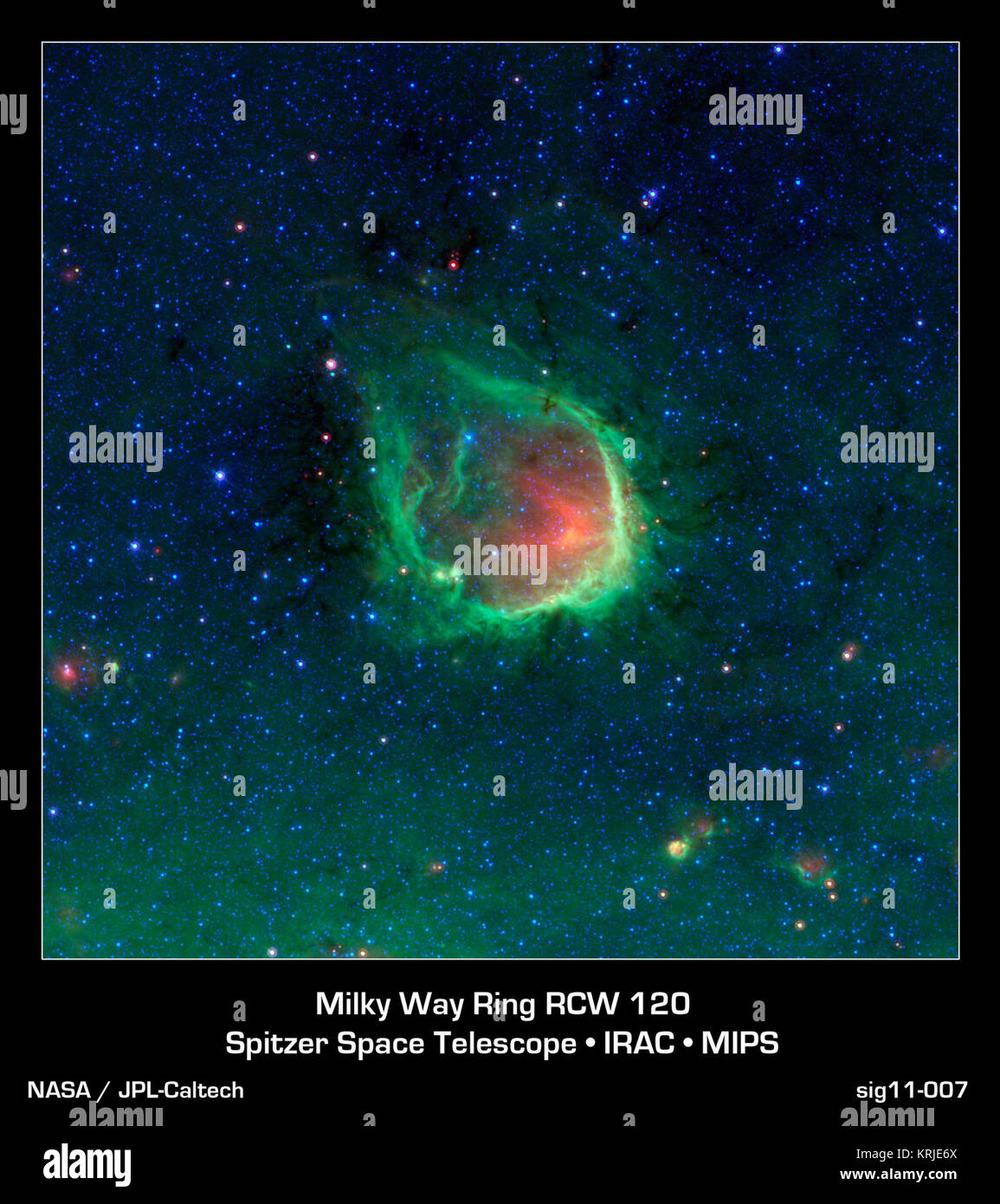This glowing emerald nebula seen by NASA's Spitzer Space Telescope is reminiscent of the glowing ring wielded by the superhero Green Lantern. In the comic books, the diminutive Guardians of the Planet "Oa" forged his power ring, but astronomers believe rings like this are actually sculpted by the powerful light of giant "O" stars. O stars are the most massive type of star known to exist. Named RCW 120, this region of hot gas and glowing dust can be found in the murky clouds encircled by the tail of the constellation Scorpius. The ring of dust is actually glowing in infrared colors that our ey

Image details
Contributor:
NASA Image Collection / Alamy Stock PhotoImage ID:
KRJE6XFile size:
7.2 MB (521.4 KB Compressed download)Releases:
Model - no | Property - noDo I need a release?Dimensions:
1491 x 1677 px | 25.2 x 28.4 cm | 9.9 x 11.2 inches | 150dpiMore information:
This image is a public domain image, which means either that copyright has expired in the image or the copyright holder has waived their copyright. Alamy charges you a fee for access to the high resolution copy of the image.
This image could have imperfections as it’s either historical or reportage.
This glowing emerald nebula seen by NASA's Spitzer Space Telescope is reminiscent of the glowing ring wielded by the superhero Green Lantern. In the comic books, the diminutive Guardians of the Planet "Oa" forged his power ring, but astronomers believe rings like this are actually sculpted by the powerful light of giant "O" stars. O stars are the most massive type of star known to exist. Named RCW 120, this region of hot gas and glowing dust can be found in the murky clouds encircled by the tail of the constellation Scorpius. The ring of dust is actually glowing in infrared colors that our eyes cannot see, but show up brightly when viewed by Spitzer's infrared detectors. At the center of this ring are a couple of giant stars whose intense ultraviolet light has carved out the bubble, though they blend in with other stars when viewed in infrared. The green ring is where dust is being hit by winds and intense light from the massive stars. The green color represents infrared light coming from tiny dust grains called polycyclic aromatic hydrocarbons. These small grains have been destroyed inside the bubble. The red color inside the ring shows slightly larger, hotter dust grains, heated by the massive stars. This bubble is far from unique. Just as the Guardians of "Oa" have selected many beings to serve as Green Lanterns and patrol different sectors of space, Spitzer has found that such bubbles are common and can be found around O stars throughout our Milky Way galaxy. The small objects at the lower right area of the image may themselves be similar regions seen at much greater distances across the galaxy. Rings like this are so common in Spitzer's observations that astronomers have even enlisted the help of the public to help them find and catalog them all. Anyone interested in joining the search as a citizen scientist can visit "The Milky Way Project, " part of the "Zooniverse" of public astronomy projects, at http://www.milkywayproject.org/ . RCW 120 can be found sl